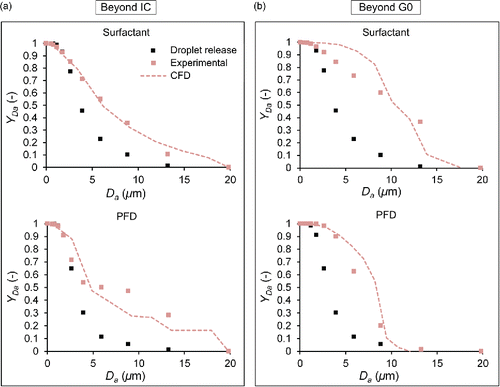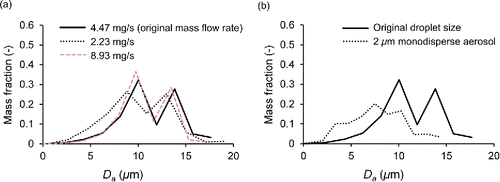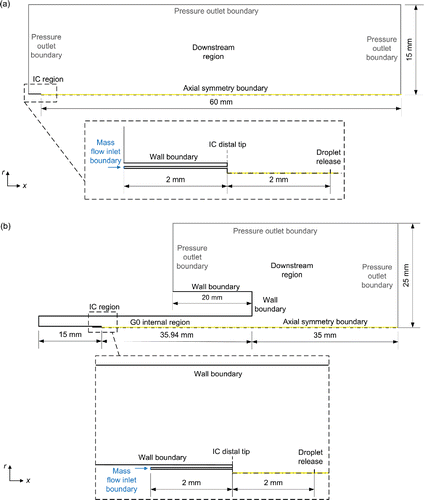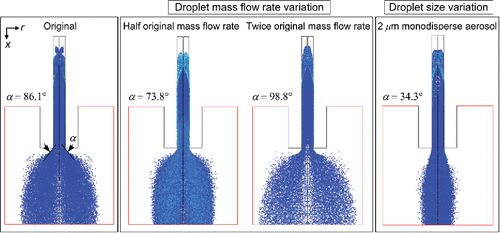Figures & data
Table 1. Uniform droplet aerodynamic diameter (Da) and mass flow rate (m) for each partial injection, for PFD and surfactant aerosols.
Figure 2. Comparison of experimental and numerical air axial velocity profiles (a) 30 mm beyond the distal tip of the IC and (b) 5 mm beyond the exit of the G0 of the physical model, for a driving pressure of 4 bar.

Table 2. Experimental and numerical results of droplet size characterization 35 mm (surfactant) and 60 mm (PFD) beyond the distal tip of the IC and 10 mm beyond the G0 of the physical model.
Figure 3. Comparison of experimental and numerical cumulative mass based droplet size distribution curves (a) 35 mm (surfactant) and 60 mm (PFD) beyond the distal tip of the IC, and (b) 10 mm beyond the exit of the G0 of the physical model. Beyond IC: Domain 1. Beyond G0: Domain 2.

Table 3. Numerical results of the percentage distribution of the atomized mass.
Figure 4. Numerical results of mass based droplet size distribution curves at the distal end of the G0 of the physical model. (a) Influence of injected mass flow rate. (b) Influence of injected droplet size.

Table 4. Numerical results of droplet size characterization just at the distal end of the G0 of the physical model for different surfactant aerosols.
Table 5. Numerical results of the percentage distribution of the atomized mass for different surfactant aerosols.


